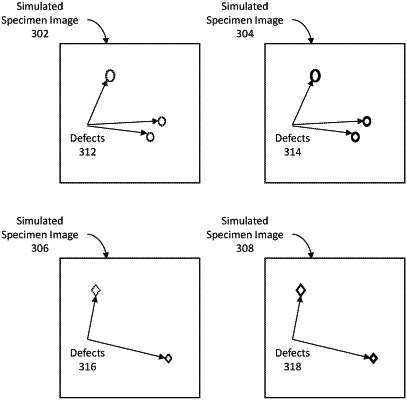| CPC G06T 7/001 (2013.01) [G06F 18/214 (2023.01); G06N 3/08 (2013.01); G06V 10/774 (2022.01); G06V 10/82 (2022.01); G06T 2207/10056 (2013.01); G06T 2207/20081 (2013.01); G06T 2207/20084 (2013.01); G06T 2207/30148 (2013.01)] | 18 Claims |

|
1. A non-transitory computer readable medium comprising instructions which, when executed by one or more hardware devices, cause performance of operations comprising:
obtaining a first data model comprising a description of (a) one or more characteristics of a crystalline material, and (b) one or more characteristics of a first defect type of a structural defect within the crystalline material,
wherein the first data model does not include any image data;
applying the first data model to a simulation model to generate a first simulated specimen image which shows the crystalline material including a first set of one or more defects of the first defect type;
inputting a set of one or more simulated specimen images as training data into a training algorithm to generate an artificial neural network, the set of simulated specimen images including the first simulated specimen image; and
generating the artificial neural network, wherein the artificial neural network is configured to detect a second set of one or more defects of the first defect type in the crystalline material as shown in a set of one or more scanned specimen images,
wherein the instructions further cause the performance of:
receiving an input identifying a modification of the first data model;
modifying the first data model based on the input to generate a second data model;
applying the second data model to the simulation model to generate a second simulated specimen image;
inputting at least the second simulated specimen image as training data into the training algorithm to generate a modified artificial neural network; and
generating the modified artificial neural network.
|